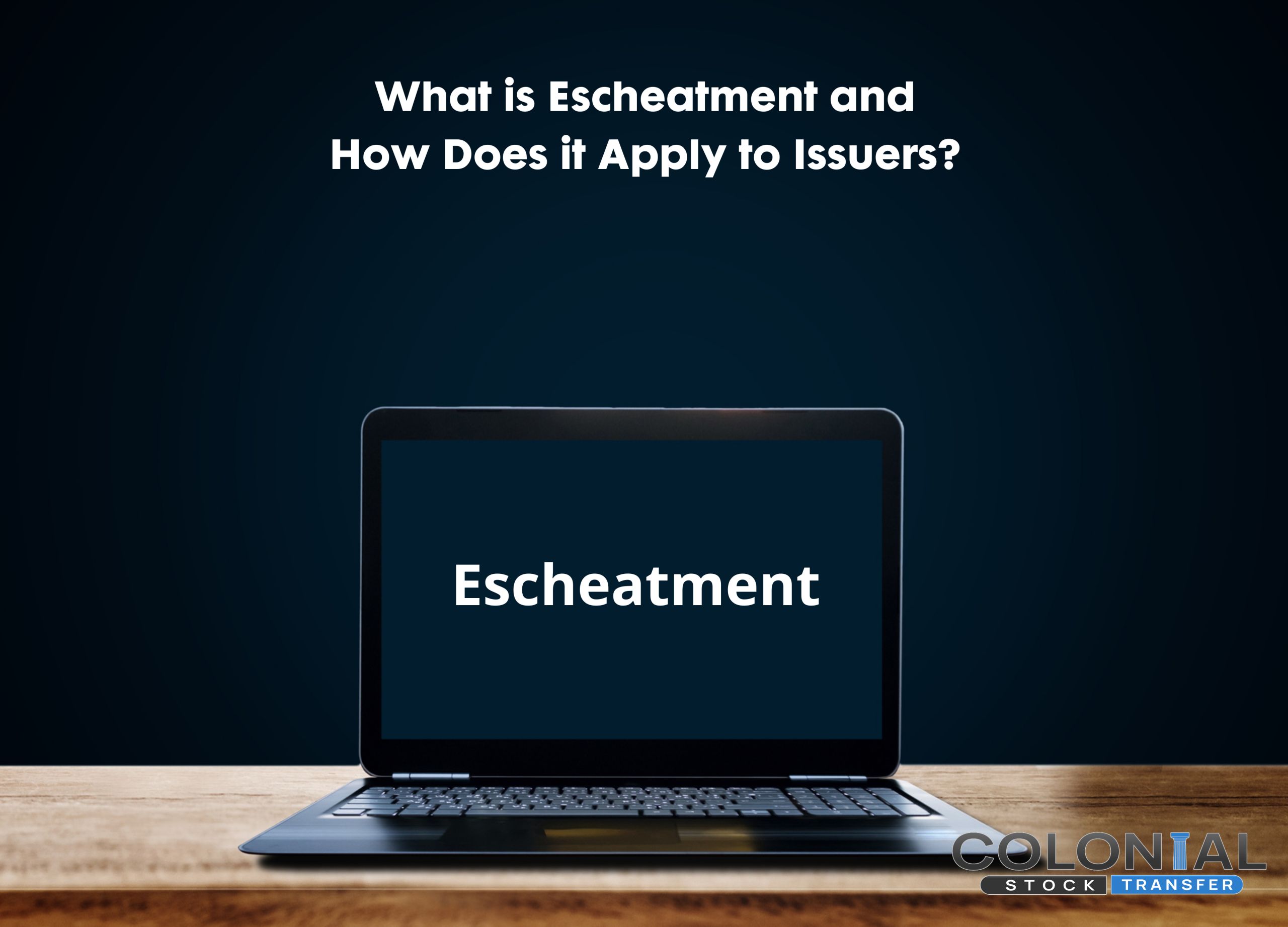
Escheatment is frequently overlooked but incredibly important in the financial world, including for issuers. Escheatment refers to the legal process where unclaimed property or assets revert to the state after a certain period of inactivity.
This process becomes crucial for issuers as they often deal with assets in the form of stocks, bonds, or other financial instruments. Understanding and complying with escheatment laws is vital to avoid legal repercussions and to ensure the rightful owners or the state can claim these assets.
Understanding the Basics of Escheatment
Escheatment is a principle going back hundreds of years. Historically, if a person died without heirs, their property would revert to the crown or state, ensuring that assets didn’t remain “ownerless.” Fast-forward to today, escheatment serves a dual purpose: protecting the owner’s property rights and providing the state with temporary custody of these unclaimed assets. This process helps reduce the chances of fraud, where someone might illegally claim another’s property.
Each state in the U.S. has its own escheatment laws outlining the type of property that’s subject to escheat and the period of inactivity after which assets are considered “unclaimed.” These laws range from checks and stocks to bank accounts and safe deposit boxes. For issuers, especially those operating in multiple states, it’s imperative to be well-versed with these varying rules.
While the primary aim of escheatment is to protect assets, it’s also a significant revenue source for states. Until the rightful owner claims their property, states can use these funds for public benefit. However, it’s crucial to note that the state only acts as a custodian and doesn’t take ownership, meaning the original owners can claim their assets even after many years.
How Escheatment Works: Step By Step
The escheatment process, while intricate, follows a structured pathway. For issuers and holders of potential unclaimed property, it’s essential to understand these steps to ensure timely compliance. Here’s a breakdown of the process:
- Identification of Dormant Assets: After a certain period of inactivity, assets like unclaimed stocks or checks are flagged by the holder. This inactivity period varies by state and type of property.
- Due Diligence Notice: Before escheating assets, holders are usually required to send a due diligence notice to the owner’s last known address, informing them of the impending transfer to the state.
- Waiting Period: After sending the notice, there’s a waiting period during which the owner can claim the property. This period is usually specified by state law.
- Reporting to the State: Holders must report and remit it to the appropriate state if the property remains unclaimed after the waiting period.
- State’s Attempt to Locate Owners: Once the state receives the unclaimed property, they often make efforts to locate the rightful owner, usually through a public database or outreach programs.
- Claiming Process: Owners can claim their assets from the state by providing adequate proof of ownership. The state then returns the property without charging any fees.
While the escheatment process might seem straightforward, each step requires meticulous attention to detail. Issuers must maintain accurate records, ensure timely communications, and be proactive in identifying potential unclaimed properties. With millions of dollars in unclaimed assets each year, understanding this process can save issuers from hefty penalties and reputational damage.
Implications for Issuers: Duties and Responsibilities
For issuers, understanding escheatment isn’t just about knowing a legal process; it’s about fulfilling their duties and responsibilities towards their investors and the state. Issuers must regularly monitor their accounts and financial instruments to identify any assets that might be nearing the dormancy period set by the state. This proactive approach helps in ensuring that investors’ rights are protected.
Moreover, compliance with escheatment laws means timely reporting. Issuers must maintain accurate records of all their financial instruments, as these records play a crucial role during the reporting phase. Any discrepancies in reporting can lead to legal challenges, putting the issuer at risk of penalties.
Examples of payments and financial instruments that issuers could be required to escheat include:
Abandoned Securities: Stocks or bonds that have been unclaimed for an extended period.
- Dividend Payments: When shareholders do not cash or deposit dividend checks.
- Interest Payments: Owed to bondholders that remain unclaimed.
- Uncashed Distribution Checks: From mutual funds, partnerships, or other investment vehicles.
- Proceeds from Stock Buybacks: When a company repurchases stock and the proceeds are unclaimed.
- Payments from Mergers or Acquisitions: Funds owed to investors of a company being bought or merged that remain unclaimed.
- Redemption Funds: From redeemed or matured bonds that are unclaimed.
- Distributions from Liquidations: Any funds distributed after a company’s liquidation that aren’t claimed.
- Stock or Bond Certificate Replacement Funds: When a certificate is lost, and the owner is due a payment, but it remains unclaimed.
- Unexercised Stock Options: Especially relevant for company employees or executives.
Lastly, communication plays a pivotal role in the escheatment process. Issuers are usually the first point of contact for investors. Thus, keeping open channels of communication, regularly updating investor contact information, and promptly informing them about potential escheatment can prevent unnecessary transfers to the state.
Potential Consequences of Non-Compliance for Issuers
Escheatment laws might seem benign, but non-compliance can have severe consequences for issuers. Let’s delve into some potential repercussions:
- Penalties and Interest: Non-compliance can lead to issuers being charged with penalties and interest on unclaimed property, increasing the financial burden.
- Audit Risks: States can and do conduct audits on issuers to ensure compliance with escheatment laws. Such audits can be resource-intensive and lead to further penalties if discrepancies are found.
- Reputational Damage: Regularly failing to comply with escheatment laws can harm the issuer’s reputation, making it harder to attract investors in the future.
- Legal Challenges: In some cases, non-compliance can lead to legal challenges, not just from the state but also from aggrieved parties who might find their assets wrongfully escheated.
- Operational Costs: Addressing non-compliance, especially after assets have been escheated, can be operationally taxing, requiring resources for communication, documentation, and potential restitution.
- Strained Relations with Investors: Regularly escheating investors’ assets due to negligence can strain relationships, leading to a loss of trust and potentially driving investors away.
It’s evident that the stakes are high for issuers when it comes to escheatment. Not only are there financial implications, but the very trust between issuers and investors can be eroded with repeated non-compliance.
Best Practices with Escheatment Laws
To navigate the intricate landscape of escheatment, issuers should adopt some best practices. Firstly, issuers must prioritize regular account monitoring. Issuers can proactively address potential escheatment issues by routinely checking for dormant accounts or unclaimed assets.
Investing in training is also pivotal. Issuers should ensure that their staff understands escheatment laws, especially if they operate in multiple states. This knowledge helps in accurate and timely reporting, reducing non-compliance risk.
Lastly, technology can be a boon. With the advent of advanced financial systems and software, issuers can automate much of the escheatment process. Such automation can help identify dormant assets, send due diligence notices, and ensure accurate reporting.




